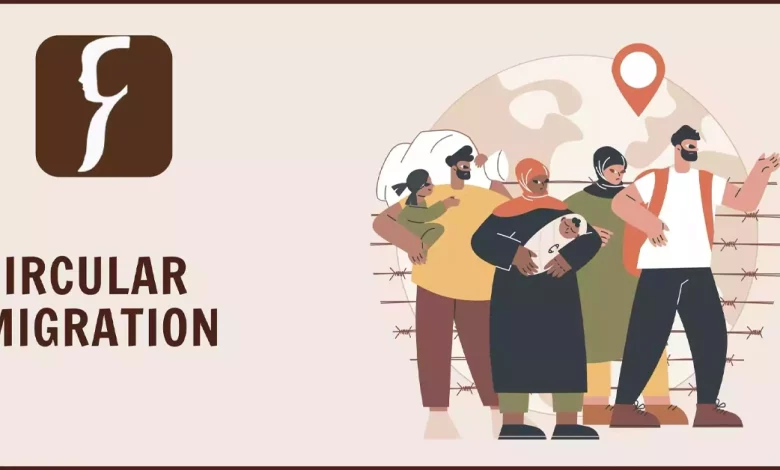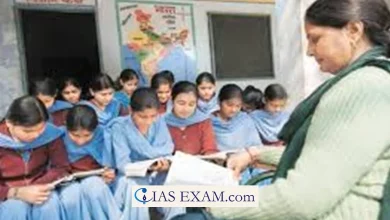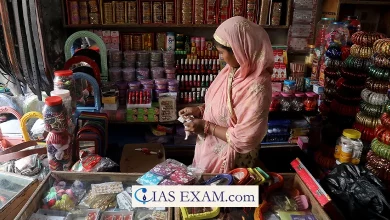Circular Migration and Associated Challenges
[GS Paper 3 - Indian Economy, Effects of LPG Reforms, Industrial Policy]

Context – Circular migration gained prominence in the wake of globalization and technological advancements, facilitating easier mobility. As the world grapples with migration challenges, circular migration emerges as a balanced approach.
This form of migration involves the temporary movement of individuals between their home country and a destination country for work or other purposes, with the intention of returning to their home country after a period of time. Circular migration has become increasingly important in the globalized world, but it also presents several challenges that need to be addressed.
Understanding Circular Migration
- Circular migration differs from permanent or long-term migration in that it is characterized by repeated movements between two or more countries.
- Philippe Fargues defines circular migration based on specific criteria, including temporary residence, multiple entries into the destination country, freedom of movement between origin and destination, legal rights for migrants, protection of their rights, and a demand for temporary labor in the destination country.
- For instance, if a migrant moves from country A to B and back to A, they are considered a return migrant. However, if they continue to country B again, they have completed two loops, earning them the label of a circular migrant.
- These movements can be seasonal, such as agricultural laborers traveling to work on farms, or they can be driven by economic factors, with individuals seeking temporary employment opportunities in another country.
- The key feature of circular migration is the intention to return to the home country, making it distinct from permanent settlement in a foreign country.
Advantages of Circular Migration
- Economic Contribution: Circular migrants often fill labor gaps in destination countries, particularly in sectors like agriculture, construction, and hospitality. They contribute to economic growth by providing the necessary workforce during peak seasons.
- Skills Transfer: Circular migration can facilitate the transfer of skills and knowledge from destination countries to sending countries. Migrants may gain valuable work experience and expertise that they can bring back to their home communities.
- Remittances: Circular migrants may send remittances to their families in their home countries, which can be crucial for poverty alleviation and development. These remittances can contribute to improving living standards and access to education and healthcare.
- Women Empowerment: The absence of male family members due to migration often leads to increased autonomy and decision-making power for women in migrant households. This shift in gender dynamics can have positive social and cultural implications.
Challenges and Issues
- Vulnerability to Exploitation: Circular migrants often face precarious working conditions, low wages, and inadequate legal protection in destination countries. This vulnerability can lead to exploitation and abuse by employers.
- Social Disruption: Frequent migration can disrupt family life and social ties, as migrants may spend long periods away from their home communities. Children may grow up without the presence of one or both parents, impacting their emotional well-being and development.
- Legal and Administrative Barriers: Circular migrants often encounter bureaucratic obstacles, including visa restrictions, work permits, and other administrative hurdles. These barriers can deter legal migration and push migrants into irregular channels.
- Health Concerns: Circular migrants may lack access to healthcare in destination countries, and their mobility can contribute to the spread of diseases, including communicable ones. This poses public health challenges for both sending and receiving countries.
Policy Responses and Recommendations
- Legal Frameworks: Governments should establish clear and fair legal frameworks for circular migration, including simplified visa procedures and protections for migrant workers. Bilateral and regional agreements can also facilitate the movement of labor.
- Labor Rights: It is essential to ensure that circular migrants enjoy the same labor rights and protections as domestic workers. Enforcement mechanisms should be in place to prevent exploitation and abuse.
- Social Support: Governments and civil society organizations should provide social support systems for circular migrants and their families, including access to education, healthcare, and counseling services.
- Skills Development: Initiatives should be launched to enhance the skills and employability of circular migrants, with a focus on facilitating the transfer of skills to their home countries.
- Data Collection: Comprehensive data collection and analysis are necessary to better understand circular migration patterns and their impact. This information can inform evidence-based policymaking.
Conclusion
Circular migration is a complex and multifaceted phenomenon that holds both benefits and challenges for sending and receiving countries. While it can contribute to economic growth and skills transfer, it also poses risks to migrants’ well-being and social stability. Effective policies and cooperation between countries are essential to harness the potential benefits of circular migration while mitigating its associated challenges. By addressing the vulnerabilities faced by circular migrants and promoting their rights and well-being, societies can ensure a more equitable and humane approach to labor mobility in the 21st century.
SOURCE: The Hindu
Practice question:
Q. What was the primary reason for rural-to-urban migration in India, as indicated by the 2011 census?
- Employment opportunities
- Education
- Healthcare facilities
- Social factors





.png)



